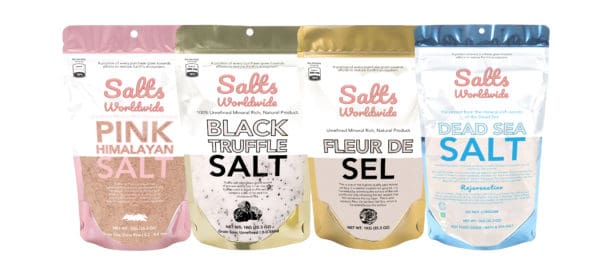
Salt Varieties – What Type of Salt is Best For Cooking?
Salt is one of the essential cooking ingredients. It has been used for thousands of years as both a seasoning and a curing agent. The oldest trace of salt was found in salt mines in ancient China. Since then, salt has been used for both cooking and for medicinal purposes. Here are 5 facts about salt, that you may not know.
A: Salt is not picky. All three kosher, coarse salt, sea salt, and table salt have the same percentage of sodium chloride. But kosher salt typically has a coarser coarse grain, so it has less sodium chloride by mass. So, if you make the change to regular salt, you will automatically lessen the sodium content in your cooking by about one percent.
B: The molecular density of salt is higher than that of regular table salt. This makes it harder for the salt to dissolve in water or other liquids. When food is cooked on a stovetop, salt will clump together with the food, creating pockets that allow the food to absorb the salt molecules through osmosis. The more salt molecules food absorbs, the denser and harder it becomes and the more it will take to dissolve in liquid. So when you cook, you will dissolve foods that have more salt than others. So if you want your dishes to have a smoother texture, less stick, and to retain their flavor, use regular table salt instead of salt with a high molecular density.
C: Salt will not melt into the food like other seasonings do. Most spices, like garlic salt or black pepper, melt into the food. So, adding a little bit of sea salt or regular table salt won’t really change the texture much. But when cooking with them, you can also incorporate spices that will melt into the texture. Just remember that sea salt is going to take longer to dissolve than regular table salt.
D: There are two different types of salt: coarse sea salt and fine sea salt. The coarse salt will be very coarse and will go through your fingers more easily than other types. The fine salt is more uniform and has a much finer graining. The type of salt you need depends upon what your final salt destination will be and what you are using it for. If you are buying large amounts, you might want to get both types because each will have a different texture and come in different colors.
E: Many people don’t realize that sea salt is actually made out of seawater. It is harvested by draining water from a natural sea bed and then adding the salt and minerals from the water to dry. As a result, sea salt will have a different texture than table salt would have. However, the salt will still taste great and does not react with certain foods the way that table salt will. This type of salt may also be used in baking recipes if desired.
F: The next type of salt is processed salt. This salt may come from sea water or another body of water and is processed to make salt that can be purchased in powder form at the store or health food store. The salt is often made chemically but that isn’t the only way it is processed. The salt can also be dehydrated, smoked, or added minerals.
G: Next is crystal salt. This salt is harvested from crushed crystals of salt and is one of the rarest kinds of salt around. The crystals are cut and then Scientists vacuum seal the crystals to make salt. Because of the uniqueness of crystal salt, the price is high. When purchasing this type of salt, it is important to make sure you are buying coarse crystals as the crystals will be more refined and have less volume and natural crystals will weigh more.


Recent Comments